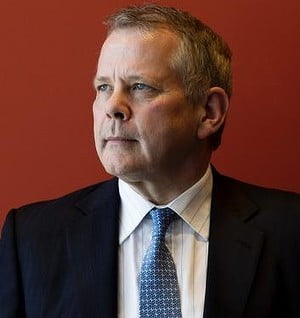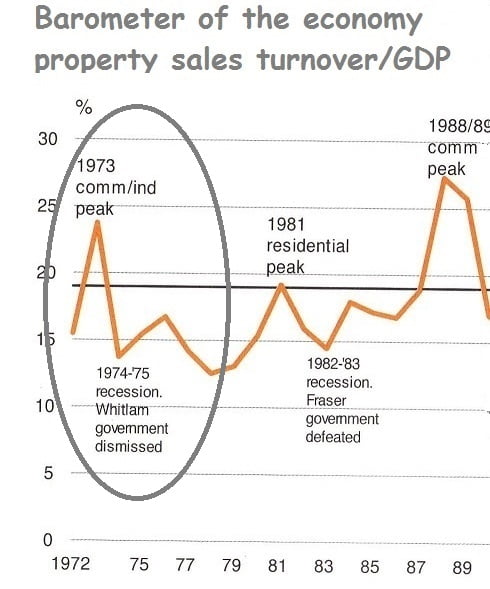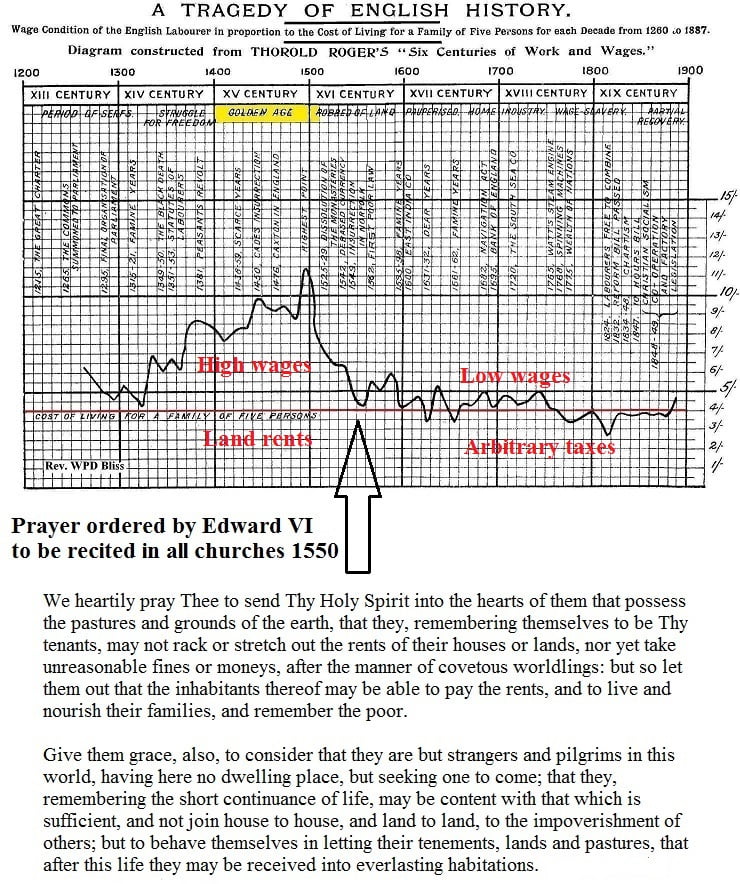
Japanese fighting Germans in Oz for favouritism in the horse race that stops a nation?
You’ve got to love that sense of proportion!

Japanese fighting Germans in Oz for favouritism in the horse race that stops a nation?
You’ve got to love that sense of proportion!

A senior banker or not, you’ve got to give credit where credit is due. Negative gearing blamed for irrational property obsession —>
Australian property speculators, including most of our politicians, won’t thank you for your comments. Phil.
Maybe Mike Smith hauled you over the coals for saying this?
Tony Abbott has called for a “mature debate” on reform of the Australian tax regime.
But, Prime Minister, The Henry Tax Review was a thoroughgoing and mature analysis. It recommended abolishing 120 inefficient taxes for a switch to a mining tax and a land tax, both the most efficient sort of “taxes” because they are NOT arbitrary taxes on our workers nor profits, but on natural resources.
Reading between the lines, Tony, your “mature debate” is looking for a different conclusion – one which will permit the goods and services tax (GST)–which affects the poor and lower middle class more than it affects the 1%–to be extended.
You might get backdoor support from opposition members of parliament on the GST because the Labor Party also has a significant number of property speculators in its ranks.
Hey, both sides! How about revisiting The Henry Tax Review – in the national interest?
They’re both Zombie economies
The USA has the benefit of having the world’s most dominant currency as it endeavours to conceal the fact that it is experiencing a debt deflation. It can therefore print more and more money to keep its zombie businesses going in order to present the illusion of recovery and growth.
This approach is dilatory only, the US living on borrowed time until even neoclassical economists will have to acknowledge the bottoming of another Kondratieff-Wave (viz, that another economic depression has arrived). The US delaying tactic is much the same approach taken by Japan since 1989, during which time it has sought to prop up its banks instead of letting them go to the wall as a result of their vast 1980s’ real estate excesses. As with the US, Japan thought it better to try to save face and keep the economy in Zombie land rather than reform its economy by capturing her economic rents to the public coffers (instead of continuing to apply counter-productive taxes).
Africa’s Burkina Faso did not have the luxury of this US or Japanese deception and, like ‘Arab Spring’ countries, its citizens have moved directly to the revolutionary phase by storming parliament. Unfortunately, they’ll be no more successful in their ‘reforms’ than Arab Spring nations.
Why am I so pessimistic about this?
Because, like US citizens, Burkina Fasoans haven’t the wit to overturn the tables on their rent-seeking 0.01%. They don’t even understand that their economic rents have been stolen.
Nor do we in Australia, where Tony Abbott’s rat-cunning is pointing us towards an extended GST that will most affect those with no capacity to save, instead of to the land taxes proven to be most efficient and to have no deadweight. He knows extending the GST will hurt neither his big rent-seeking mates nor his parliamentary property-speculating fellows.
The argument above is why this site exists: to educate people who, understanding the need for fiscal reform, can learn how land value capture can remedy financial and social collapse.
Alternatively, we can continue down the plug-hole. We do have this choice.
But wait …. there’s more! (That’s especially ridiculous in view of the critique at https://thedepression.org.au/?p=20598)
Tracing the ways infrastructure in Australia has been funded. Annabelle Quince’s Rear Vision on Radio National – excerpt
Gary Bowditch: The way that that decision was taken was a very interesting one. It was interesting for one very important reason, and it’s one that we need to be reminding ourselves continually here in 2014, and that is that infrastructure, in this case a bridge, was connected to a broader system, a broader system of the community and in particular the land that it connected.
The decision to go ahead with the Sydney Harbour Bridge was done with some very clear governance frameworks in place, and that was that the decision to proceed with the bridge had to be balanced against the cost to the impact that that would have on the land values on the other side of the city. So while cost benefit analysis wasn’t in fact in place at that time, there was an underlying intuition that if you were to provide a piece of infrastructure, that there would be a cost and there should also be a return, and that social return was reflected in the attempt to say, well, how did land values increase as a result of the bridge? And to the credit of the planners and the decision-makers, that was put in place. And the uplift value that would have occurred on the north shore would have paid for the bridge several times over.
Annabelle Quince: So, in essence, because land values went up on the north shore, the people on the north shore in a sense paid through their land values something that went back to help pay for the bridge.
Gary Bowditch: There was a betterment tax that was associated with those increase in land values so that the government, who was paying for the bridge, were able to extract a part of that improved/ unimproved capital value to fund the bridge. So in fact there were two revenue sources for the bridge at the time. One was a fee for the use of trains that would run across it, which was a separate decision but one that was integrated into the broader decision, and the other was the betterment taxes.
Annabelle Quince: Many of the states’ major infrastructure projects were overseen by and funded by state infrastructure authorities, like the Melbourne and Metropolitan Board of Works and the New South Wales Roads and Traffic Authority.
Marcus Spiller: A statutory corporation called the Melbourne and Metropolitan Board of Works was something that was set up in fact prior to Federation, basically to deal with the sewage problem in Melbourne. It was a statutory authority, it was at arm’s length from government, it raised its own rates, it raised its own infrastructure bonds, and it built right through until the ’70s a very comprehensive sewer and sewage treatment system, one that was held up for decades as a world-leading example of engineering in that area.
They also built a magnificent metropolitan parks system where they looked at their drainage management responsibilities but interpreted it more broadly. They turned what would otherwise just be creeks for drainage purposes, they turned them into a wonderful metropolitan parks system. And in the latter days of their operations as a multipurpose infrastructure agency they built the Tullamarine Freeway here in Melbourne, which until fairly recently was a very effective way of conducting people from the airport to downtown, their jobs and homes and so forth. So the Boards of Works is probably a shining example of the way things used to be done.
Annabelle Quince: And you said they raised their own capital, so explain that. How did they get the money to do all that?
Marcus Spiller: Yes. Well, they were a metropolitan authority and people resident in the metropolitan area paid rates, both to their local council for local services, but they also paid rates to the Melbourne Metropolitan Board of Works which was in charge, as I mentioned before, of the water services, parks and recreation services at the metropolitan level, and they also did planning, metropolitan planning.
So the rates that the Board of Works raised on the back of the properties in the Melbourne metropolitan area, which was quite a large tax base, the revenue from those helped service bond raisings that the Board of Works used to issue from time to time. So from time to time they’d issue Melbourne Metropolitan Board of Works bonds. Mums and dads and indeed institutional investors used to buy up these bonds, which were quite secure, they were backed by revenues generated from property taxes which are highly secure, they are not as prone to economic cycles as various forms of income taxes. And so they were pretty effective at raising capital for their program.
In addition they received funding appropriations from the state government for projects that were of a scale that demanded it. So, for example, if they were building major dams in the catchments well beyond the confines of Melbourne, a project that had a major intergenerational benefit attached to it, the government of the day would also provide capital to the board. But the funds-raising on the back of their independent tax base was quite important.
Annabelle Quince: So when does that start to change? When does that model that was clearly used in various parts of Australia, when does that stop being used and what was the model that was introduced?
Marcus Spiller: Yes, well, the model started to change from about the mid ’70s onwards, and there was quite a sharp change in sentiment. I spoke earlier about the post-war reconstruction fervour where we really wanted to build a new future and get to work building the sorts of infrastructures and cities that we needed to really give us a different direction compared to the misery of the war and the pre-war period.
And Keynesian economics ruled the day, that’s the period when people looked to government to invest and to make things happen. By about the mid ’70s, probably signposted by the election of the Thatcher government in the UK and subsequently the Reagan administration, there was a pretty extensive or global critique developing of that post-war model. By then people had started to say, look, government is really crowding out private sector activity, it’s really throttling enterprise and endeavour, it’s really crushing productivity, we’re stagnating, government really needs to get out of the way.
In our country this reform or this critique and the reform initiatives that flowed from it came under the title of microeconomic reform under the leadership of the Hawke/Keating government which started to look at the way we did infrastructure, the way we did regulation, the way we dealt with labour markets.
And the whole agenda became one of stripping away unnecessary interventions and looking at ways in which we can bring market disciplines into all facets of the economy and the community in order to get more efficiency, in order to get more dynamic resources, in order to grow the economy which had fallen into a bit of a funk by that stage.
And so whereas in the post-war period the engineers sort of ruled the roost, from about the early ’80s the sort of accountants and the MBAs took over in the infrastructure space. And whereas previously it was a question of building the best possible infrastructure you could with the resources you had, you now had a more businesslike attitude to the way infrastructure should be provided.
So we started to look at ways of ways of bringing user-pays into the way we fund infrastructure in a more overt way. Previously there was user-pays, but in a fairly indirect way. We wanted to bring user-pays into it so that the suppliers of infrastructure had some price signals about where and when to invest.
Whereas previously we built a lot of redundancy into our infrastructure because we had this eye to the long-term future, in this new period it was more about making the best possible use of scarce resources and investing as if you were investing in the private sector, you know, you must generate a decent rate of return on the investment within a reasonable period of time. We began to sweat our assets more, use the spare capacity that was in the infrastructure more, starting to make infrastructure investments just in time rather than ahead of time and with spare capacity. So it was very much a businesslike culture and discipline that was brought to infrastructure provision.
Annabelle Quince: From the 1980s onwards, private enterprise started to play an ever-increasing role, not only in building infrastructure but also in owning and managing our infrastructure.

Despite all the political scandals, Gough Whitlam was indeed a great leader and reformer. Much of the lingering bitterness directed at Whitlam’s economic performance has completely ignored the then world’s greatest real estate bubble which burst on his watch and put extreme financial pressure on many Australians. Our hip pockets certainly felt it. It hurt.
Yes, like all of us Whitlam had his weaknesses, but can you name one Australian prime minister who has been able to manage a collapsed real estate bubble? (Kevin Rudd and Wayne Swan spent $50 billion in an effort to delay the current one from bursting.)
Although TIME magazine supplement 1 Oct 1973 (some photos edited out) devoted a special cover story to the bubble which doubled US and world land prices from 1972 to 1973, there was no mention at all of it in the ABC’s two hour coverage of the Whitlam prime ministership last Tuesday night. Then, as now, a revisionist view of history–which allows us to speak of the OPEC crisis–obscures these speculative real estate disasters so we can repeat them again.
Again, vale Gough Whitlam.
